Introduction
In this article, we’re going to provide all the information that you need to build your own Automatic Chicken Coop Door.
Overview
You learn about a solid and simple solution to opening and closing your coop door. You’ll also learn about the tools, materials and parts which you will need.
Our approach is to provide a modular DIY approach to building your own auto chicken door. Specifically, if you are good at woodworking and have access to most of the basic woodworking tools, then you can use these plans to build the wooden cabinet and door controller enclosure. If you are good at working with electronics and writing the micro-controller firmware code, then you will learn about the key aspects which will help you design your own solution.
With these plans, you will build your own chicken coop automatic door based on Coop Tender®. This door is the rated the best automatic chicken coop door and has been on the market since 2014.
The electronics do require some special tools including a micro-controller programmer. Coop Tender® offers most of the parts you might need, including a pre-built and tested automatic coop door controller.
Auto Chicken Door Components
There are basically 3 major components to an auto chicken door.
- Physical Door and Frame: Provide an opening during the day and solid entrance barrier at night.
- Door Drive Mechanism: How the door will be operated to open and close the entrance
- Door Controller and Associated Hardware: The coop door brains which determine when to open and close the door, but also to activate the Door Drive Mechanism to do so. Associated Hardware includes wire, connectors, power, etc.
In an ideal solution, each of the 3 components will work together to provide a durable operating experience. Physical dimensions, precision woodworking, drive mechanism and electronics working together within designed specifications to provide a durable, long lasting solution.
Auto Chicken Door Design Considerations
The size and weight of the door has the most impact on overall design considerations. Each of the other components are designed with these and other physical operational aspects in mind.
Chicken Door and Frame
The size and weight of the door assembly will have an impact on how powerful the drive motor and associated electronics will need to be. These chicken door plans will provide your chickens with an opening which is about 10 inches wide x 10 inches high. This is more than large enough for most chicken breeds.
The door frame with motor housing door controller enclosure will be 13 ½ inches wide x 26 ½ inches tall when complete. The unit will slide into a rectangular cutout or opening of the same size in your coop. There is no need to frame the coop opening since these design plans include an integrated door frame.
Chicken Door Drive Mechanism
The mechanism which will open and close the coop door is simple, efficient and very durable. Essentially, a threaded rod is fitted to the end of a motor shaft such that the motor directly turns the door drive shaft (the threaded rod) to open and close the door.
One of the key benefits of this design is that there isn’t a predator alive that can open the door when it is closed.
Coop Tender® uses a 5/8 Inch Acme Threaded Rod and a high torque permanent magnet gear motor for our automatic chicken door drive mechanism.
You can use threaded rod which is available at your local hardware store. These will have more threads per inch (TPI) than an Acme Threaded rod, so the door will open and close more slowly. You will also need to drill two holes into the threaded rod, one at the end for the motor shaft and one through the diameter of the shaft for a cotter pin to secure the drive to the motor shaft. If your motor doesn’t have a cross hole in the shaft, you will need to drill this too.
For the motor, you will need one which takes relatively low power under load, generates enough torque to turn the threaded rod and operate the door with enough speed. Ideally the motor should be rated to operate at 12 volts DC with a current rating less than 600 milliamps with torque of 2 inch – lbs. or higher. You’ll want the motor shaft to turn around 100 RPM. This opens and closes the door in about 1 minute when using 5/8 inch - 8 TPI Acme Threaded Rod.
Auto Chicken Door Motor and Controller Housing
To complete this auto chicken door design, we’ll top it off with a motor housing to protect the motor and has plenty of room inside to place the electronics, including a 12 volt 5 Amp Hour Sealed Lead Acid battery.
Auto Chicken Door Power
When considering how to power your auto chicken door, determine if it may be beneficial to operate with solar power. If you have a tractor chicken coop which you move around and are unable to get conventional household electricity to it, you will want to ensure that your door will operate using a battery power source and solar energy to charge and maintain the battery. The power ratings and power requirements of the electronics is even more critical when deciding to operate using solar energy. In short, if your solution consumes more than an average of about 50 milliamps, you will need to design a larger battery and solar panel into the solution.
If you intend to plug your door into standard AC electricity, be sure that your AC/DC converter will provide enough voltage to keep a backup battery charged, in case AC power fails for some reason, it would be good to know that your chickens will still be secure at night. You could also use one of those computer UPS backup power supplies to operate your door. You still need to plug it into an AC power source, but if power should fail, the backup power supply will be able to operate your door.
Whether you decide to power your chicken coop door with AC electric power, or solar power, it will be beneficial to incorporate a battery charge controller into your power design considerations as well. Connecting a small 12 Volt 5 Amp Hour SLA backup battery to your door can operate it for several days but will need to be charged and maintained at proper voltage and current to extend the life of the battery.
Auto Chicken Door Controller
What you use to control your automatic chicken door can be left to your imagination. You can find several resources on the Internet which can help to give you a start in designing your own custom solution. If you have the time and talent or desire to learn micro-controller firmware coding and electronics, this will be a great project for learning.
Whether you roll your own or purchase an auto chicken door controller, be sure to consider whether Internet Wi-Fi connectivity is important to you. If you have a wi-fi network which extends to your chicken coop, why not let your door send you alerts when it opens and closes. Maybe even monitor, program and operate your door from anywhere in the world with an Internet connection and browser.
Coop Tender® can help if you’d rather not delve into the highly technical aspects of the door controller. The Coop Tender® Automatic Chicken Coop Door Control Panel Assembly is plug-and-play. All you need to do is follow the wiring diagram for the 12-pin connector by connecting the motor, limit switches and power. It’s also Internet Wi-Fi Enabled. This means that the firmware has been programmed to communicate with an IoT based Coop Door Wi-Fi Micro-Controller Module. So, connecting your door to the Internet is also plug-and-play.
Automatic Chicken Door Parts, Materials and Tools
Below are the 3 basic components of building your own automatic chicken door.
Lumber and Woodworking
Tools:
- Crosscut saw capable of cross cutting up to 12-inch-wide boards
- Table saw
- Drill press (with laser guide recommended)
- Jig Saw
- Measuring tape
- Framing square
- 1 1/16 inch Forstner drill bit
- 5/8 inch Forstner drill bit
- 5/16 inch wood drill bit
- Wood clamps (6 inch with 3 inch throat ideal)
- Machine press (optional)
- Router (optional)
- Air compressor (optional)
- Air brad nailer (optional)
Materials:
- 10 board feet of Select Grade Kiln Dried Pine lumber (1 inch x 12 inches dimensional – ¾ inch x 11 ¼ inch actual)
- Galvanized nails (1 ½ inch)
- Galvanized screws (1 ¼ inch)
- Weatherproof wood glue (e.g. Tightbond III)
- Galvanized brad nails for air nailer (optional)
Process Overview:
- Crosscut lumber with crosscut saw
- Rip and final cuts with table saw
- Mark and drill holes with drill press
- Rectangular cutouts with jig saw
- Glue, nail and glue door assembly together (drive nut machine pressed into door connector before assembly)
- Assemble, glue and nail door frame sides and rails
- Square, glue, mail and screw door frame, inserting door assembly into frame
- Assemble, glue and nail motor housing – door controller enclosure
Motor and Drive Shaft
Tools:
If you are cutting and drilling your own threaded rod
- Drill
- Hacksaw or other metal cutting device strong enough to cut 5/8 inch steel
- 5/16 inch metal drill bit
- 1/8 inch metal drill bit
- File or grinder
Materials:
- 5/8 inch diameter threaded rod
- High torque, low power permanent magnet DC gear motor
Process Overview:
- Cut threaded rod to length
- Drill hole in the end of threaded rod to fit motor shaft
- Drill cross hole near end of threaded rod for cotter pin
- Drill cross hole in motor shaft if one does not already exist
- Slide threaded rod onto motor shaft and secure with cotter pin
You can get the motor and drive shaft components, all pre-drilled and ready to go at Coop Tender®. Point your Internet browser to: https://cooptender.com/collections/diy-automatic-coop-doors. Or, go to CoopTender.com and select Automatic Coop Door Products > DIY Coop Door Parts from the website menu.
Auto Chicken Door Controller Options
Tools:
If you plan to design and build your own door controller
- Electronics breadboard for designing your prototype
- Jumper wires
- Soldering iron
- Solder
- Flux
- Schematic and PCB design software (Eagle, KiCad, Fritzing, etc.)
- Code debugging and development environment
- Micro-controller programmer
- Desoldering tools (optional)
Materials / Parts:
- PCB (you don’t really want to use electronics breadboard when installed in your coop).
- Micro-controller
- LCD display
- Miscellaneous electronic parts (voltage regulators, current regulators, capacitors, resistors, LEDs, wire, connectors, etc.)
Process Overview:
- Design, build and code using electronics breadboard to prototype your solution
- Use electronics schematic and PCB design software to design your PCB
- Have your PCB manufactured, or you can try etching your own PCB at home. Optionally, use perfboard to place your components and solder it together.
- Attach your coop door controller to the various door components (motor, limit switches, power, etc.)
Coop Tender® offers a couple of solutions which may be helpful.
First: You can buy a completely assembled and QC tested Control Panel Assembly from their website. This solution gives you all the advanced technology which is currently available on Coop Tender® Automatic Chicken Doors.
Second: If you are interested in assembling and programming your own electronic micro-controller based solution, you can access the schematic, PCB design files and parts list for the same thru hole (THT) technology which went into earlier models of Coop Tender® Automatic Chicken Doors. The designs provide for all input and output devices which are used in a Coop Tender Auto Door.
Example Connections - Device and External:
- 8-bit micro-controller
- I/O Expander IC Chip
- Motor Driver IC Chip
- Voltage regulation
- Current regulation
- 3 bi-color LED light connections
- 1 single color LED light connection
- 16x2 LCD Module connections
- Light sensor connections
- Temperature probe connections
- RTC clock module connections
The circuit boards are designed for thru-hole components, so you only need basic soldering tools.
DIY Automatic Chicken Door Woodworking and Assembly Plans
The DIY Automatic Chicken Door Woodworking and Assembly Plans are available to view, print and download in PDF format by pointing your web browser to the following URL:
Secure HTTPS:
https://cloud.cooptender.com/dJssg0n
DYI Automatic Chicken Door Electronics Plans
If you want to delve into the electronics engineering aspect of your DIY Automatic Chicken Door, stay tuned. In our next post, we’ll provide you with a schematic, parts list, PCB design and instructions to build your own automatic coop door controller.




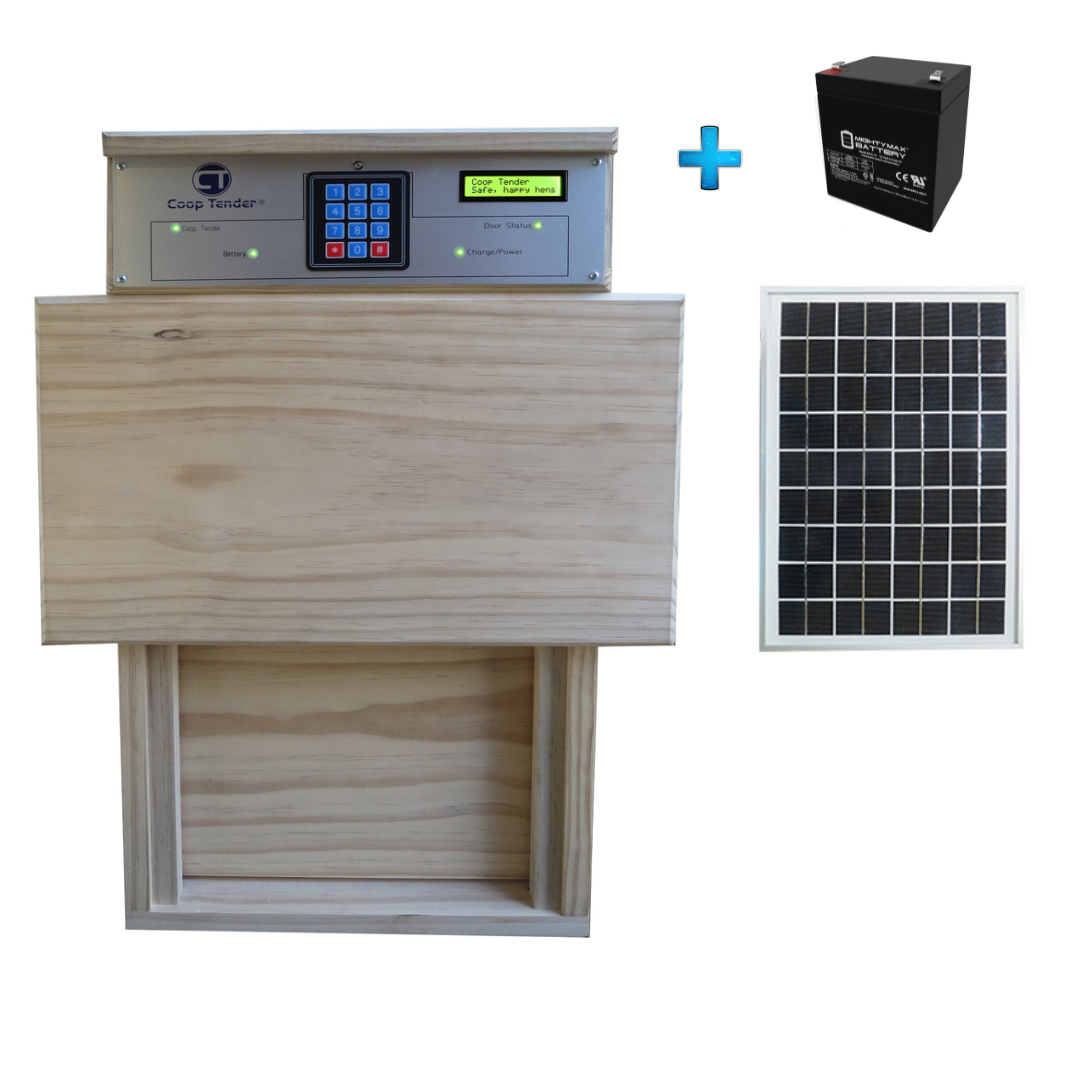
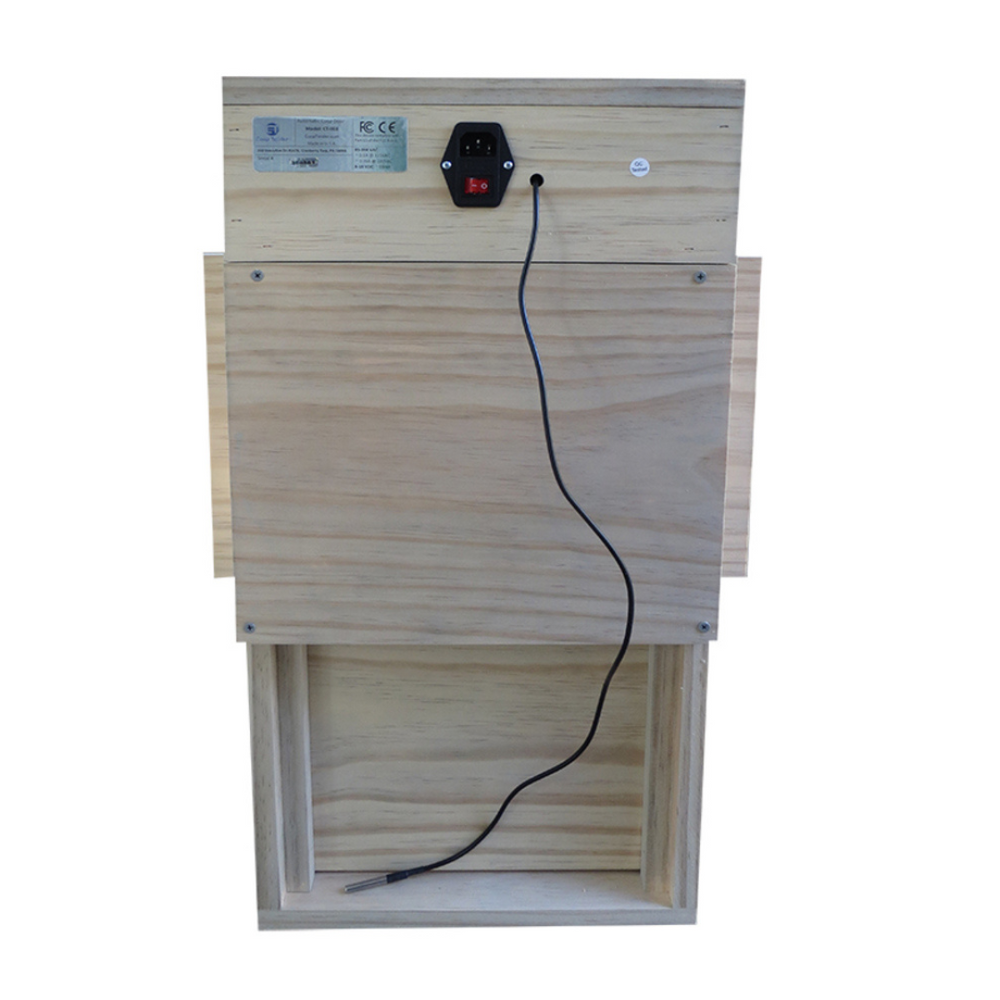
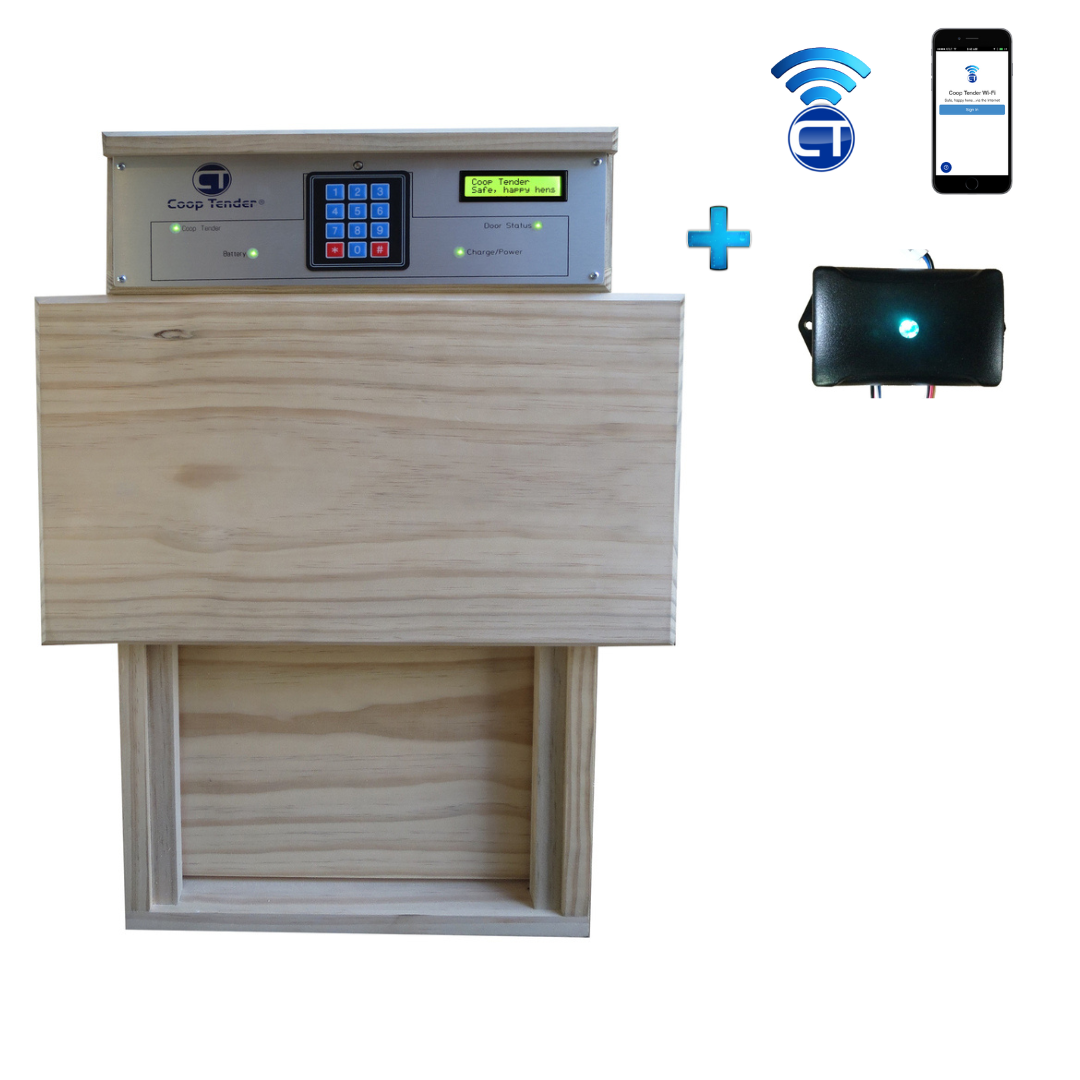

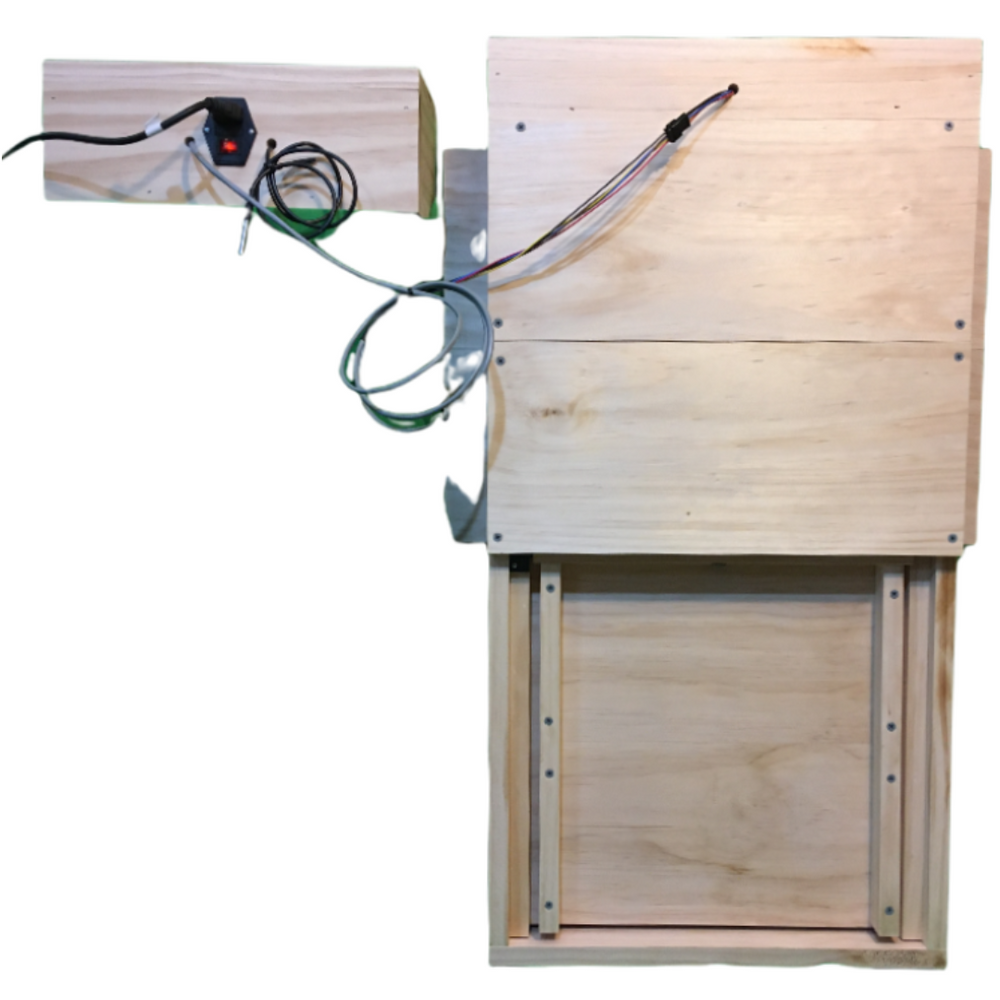
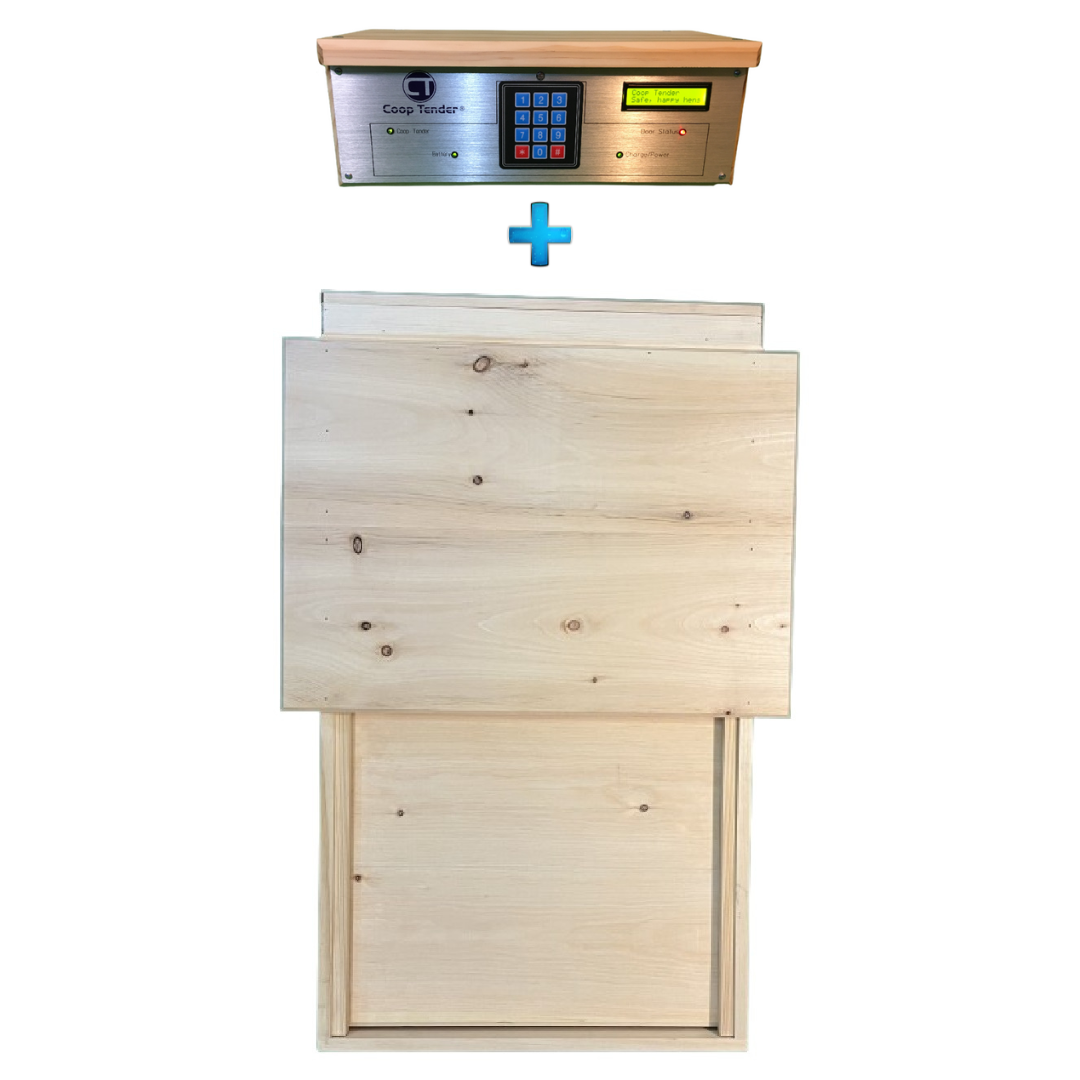
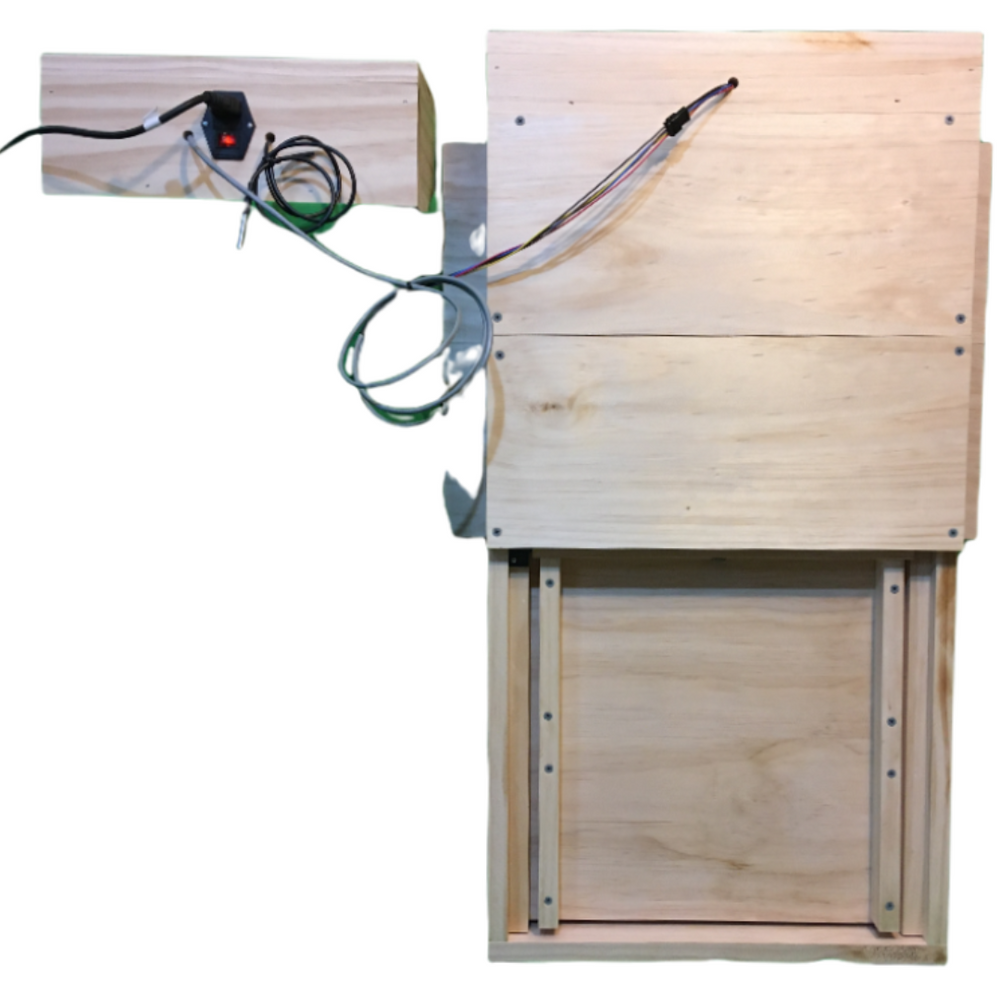
Leave a comment